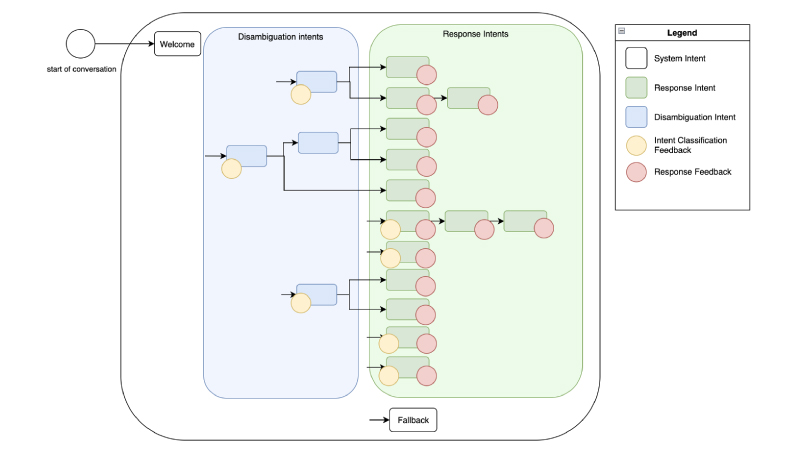Can Intent Driven Chatbots Enhance Your Business?
Chatbots that don’t use an intent architecture tend to generate vague or irrelevant results, and can ignore the thematic expression of the problem
Topics

Customer feedback and service can take an entire business up or down, based on the extent of satisfaction they provide to a customer. Naturally, marketing technology today is narrowing focus on these aspects of the customer experience.
A riveting case of enhanced CX is the chatbot. Today, not only customers, but businesses, too, are happier with chatbots in their services. For consumers, they provide ease of use and reduced wait times. Additionally, their interactive nature facilitates a personalised experience for the customer. Appointing a customer representative, reporting support issues, generating leads for the future, ordering products and services—chatbots can do all this and more.
According to a survey by Meta, more than 50 per cent of consumers choose to buy products from a company they can contact through a 24×7 available chat system. Intelligent chatbots can readily understand users’ requirements from a given context and react appropriately.
For brands, such immediate responses tied with round-the-clock availability makes for an enticing way to connect with their customers.
While all of this is effective, like every technology, chatbots come with their occasional drawbacks. Whilst more and more conversational assistants are being built, a few systematic problems have been seen to occur. The lack of an intent architecture is one of them, which makes chatbots provide vague or irrelevant results, sometimes ignoring the thematic expression of the provided problem.
The chatbot architechture
The architecture selection for a chatbot depends on several implementation factors, like use-case, domain, chatbot type, etc. However, the primary conversation methods remain the same in all the architectures.
Chatbots use pattern matching to classify different kinds of text and produce a suitable response for the end user. A standard structure of such patterns is “Artificial Intelligence Markup Language” (AIML), i.e. the chatbot knows the answer only because the user’s name is in the associated pattern. Similarly, chatbots respond to anything relating to the same associated patterns and find it challenging to go beyond the related pattern.
The use of algorithms can aid in advanced working and providing user-dedicated outputs. A unique answer pattern must be available in the database to provide a suitable response for each kind of question, and a hierarchy is created with multiple combinations of patterns. Inculcating algorithms can also reduce the number of classifiers and help create a more manageable structure.
Struggles with intent
All given, why does a chatbot need an intent-oriented feedback loop? The absence of one can be a limiting factor to the intelligence that businesses could receive from their users. Additionally, brands could miss an essential opportunity to improve by adapting to buyers’ needs. Users’ opinions can help improve products and generate high-rated reviews by providing the required customer satisfaction and experience.
The ongoing problem of intent limits businesses from providing the necessary expertise. A few examples of an unstructured intent architecture are:
- The chatbot often gets confused between two user intents that seem to have identical phrases.
- It becomes challenging to extract better training phrases from the enormous amount of conversational data acquired. This happens because the chatbot doesn’t always seem to match what some users say with the intended meaning.
- Although the chatbot’s purpose is right, people still complain about it. It doesn’t help them with their problems, and it’s unclear how to improve the service.
Methods to improve intent
There are primarily two methods through which an intelligent chatbot’s intent can be improved:
Improving feedback collection
A chatbot might fail to deliver effective customer service if its training words do not sufficiently cover the range of potential user inquiries. This type of issue is most prevalent in the conversational flow section, where there is a lot of branching right when the conversation begins. We can set up user feedback collection in a way that gradually and easily overcomes this issue. The chatbot should offer an appropriate response when one of the user’s intents is matched in their input and then inquire whether that is what the user meant.
By analysing the user response, we can deduce an intent classification to either successful or not, and save implicit feedback along with the user’s text that matched the intent. If the user selects an unfamiliar response, the chatbot should trigger a new intent that manages and corrects misunderstandings through a Fallback intent, and save negative implicit feedback, along with the user’s previous text. By keeping both positive and negative feedback, the feedback collection can be segmented as per intent and type of feedback. This can easily be analysed back to the conversation that led to such feedback, instead of going over the whole discussion again, hence also saving time.

Image Source: Digitiamo
Improving intent responses
Sometimes the response provided with intent may not be enough for specific users or might not seem to solve their problems. Therefore, the intent answers provided as output should be as transparent as possible. How can this be improved? By analysing the feedback quality of the chatbot responses and appropriately organising them.
We can define response feedback as per the answer quality associated with a response intent. If possible, negative response feedback should always be handed over to human agents. Users also seem to hate identical responses when received multiple times, making the conversation stagnant. Loops should be avoided in the chatbot’s intent graph, and different answers should be presented. The further conversations must then be analysed to understand why the intent response was not good enough for the end user.
Thanks to natural language processing and deep learning advancements, chatbots can now converse with customers just like humans do. Whether it be through websites or social media platforms, businesses today have a very active online presence. It is, therefore, rather essential to enhance a customer’s online experience in every way possible. Marketers wanting to expand their target audience in the near future must seize the opportunity and the growing trend of using custom chatbots with intent-based communication.
*Get top-notch insights from leading marketers at Vibe Martech Fest. Register here.
If you liked reading this, you might like our other stories
Are Chatbots Taking Over The Conversation?
5 Ways You Can Use Chatbots in Marketing








































































































